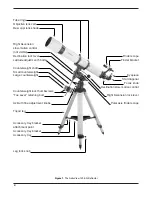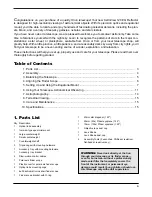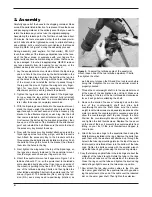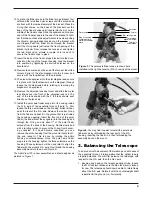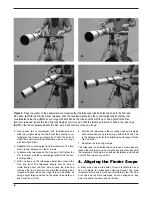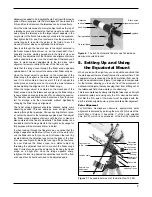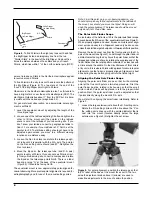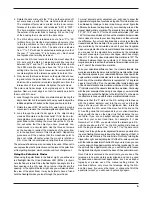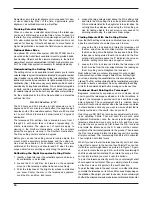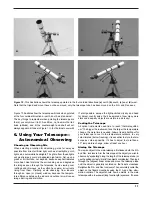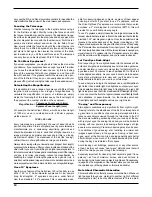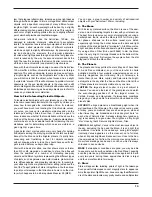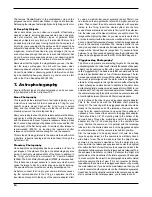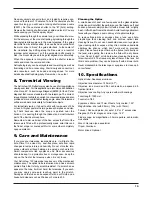
The famous “Double-Double” in the constellation Lyra and the
gorgeous two-color double star Albireo in Cygnus are favorites.
Defocusing the image of a star slightly can help bring out its color.
D. Deep-Sky Objects
Under dark skies, you can observe a wealth of fascinating
deep-sky objects, including gaseous nebulas, open and glob-
ular star clusters, and different types of galaxies. Most
deep-sky objects are very faint, so it is important that you find
an observing site well away from light pollution. Take plenty of
time to let your eyes adjust to the darkness. Don’t expect these
subjects to appear like the photographs you see in books and
magazines; most will look like dim gray smudges. (Our eyes
are not sensitive enough to see color in such faint objects.) But
as you become more experienced and your observing skills
get sharper, you will be able to discern more subtle details.
Remember that the higher the magnification you use, the dim-
mer the image will appear. So stick with low power when
observing deep-sky objects, because they’re already very faint.
Consult a star atlas or observing guide for information on find-
ing and identifying deep-sky objects. A good source to start
with is the Orion DeepMap 600 (#4150) .
7. Astrophotography
Several different types of astrophotography can be success-
fully attempted with the AstroView 120:
Moon Photography
This is perhaps the simplest form of astrophotography, as no
motor drive is required. All that is needed is a T-ring for your
specific camera model. Connect the T-ring to your camera
body, and then thread the T-ring onto the rear of the focuser
drawtube (remove the star diagonal first).
Now you’re ready to shoot. Point the telescope toward the Moon,
and center it within the camera’s viewfinder. Focus the image
with the telescope’s focuser. Try several exposure times, all less
than 1 second, depending on the phase of the moon and the ISO
(film speed) of the film being used. A remote shutter release is
recommended (#5232), as touching the camera’s shutter
release can vibrate the camera enough to ruin the exposure.
This method of taking pictures is the same method with which
a daytime, terrestrial photograph could be taken through the
AstroView 120.
Planetary Photography
Once basic Moon photography has been mastered, it’s time to
get images of the planets. This type of astrophotography also
works to get highly magnified shots of the Moon. In addition to
the T-ring, you will need a Universal 1.25" Camera Adapter
(#5264). The EQ-3 Motor Drive System (#7828) is also required.
This is because a longer exposure is necessary, which would
cause the image to blur if no motor drive was used for tracking.
The equatorial mount must be accurately polar-aligned, too.
As before, connect the T-ring to your camera. Before connect-
ing the camera adapter to the T-ring, an eyepiece must be
inserted and locked into the body of the camera adapter. Start
by using a medium-low power eyepiece (about 25mm); you
can increase the magnification later with a higher-power eye-
piece. Then connect the entire camera adapter, with eyepiece
inside, to the T-ring. Insert the whole system into the tele-
scope’s focuser drawtube and secure firmly with the setscrew.
Aim the telescope at the planet (or Moon) you wish to shoot. The
image will be highly magnified, so you may need to use the find-
er scope to center it within the camera’s viewfinder.Turn the motor
drive on. Adjust the telescope’s focuser so that the image appears
sharp in the camera’s viewfinder. The camera’s shutter is now
ready to be opened. A remote shutter release must be used or the
image will be blurred beyond recognition! Try exposure times
between 1 and 10 seconds, depending upon the brightness of the
planet to be photographed and the ISO of the film being used.
“Piggybacking Photography”
The Moon and planets are interesting targets for the budding
astrophotographer, but what next? Literally thousands of deep-sky
objects can be captured on film with a type of astrophotography
called “piggybacking.” The basic idea is that a camera with its own
camera lens attached rides on top of the main telescope. The tel-
escope and camera both move with the rotation of the Earth when
the mount is polar aligned and the motor drive is engaged. This
allows for a long exposure through the camera without having the
object or background stars blurred. In addition to the motor drive,
an illuminated reticle eyepiece is also needed (Orion #8481 is rec-
ommended).The T-ring and camera adapter are not needed, since
the camera is exposing through its own lens. Any camera lens with
a focal length between 35mm and 400mm is appropriate.
On top of one of the tube rings is a piggyback camera adapter.
This is the black knob with the threaded shaft protruding
through it. The tube ring with the piggyback adapter should be
closest to the objective end of the telescope. Remove the tube
rings from the equatorial mount and swap their positions, if
necessary. Now, connect the camera to the piggyback adapter.
There should be a 1/4"-20 mounting hole in the bottom of the
camera’s body. Thread the protruding shaft of the piggyback
adapter into the 1/4"-20 mounting hole in the camera a few
turns. Position the camera so it is parallel with the telescope
tube and turn the knurled black knob of the piggyback adapter
counter-clockwise until the camera is locked into position.
Aim the telescope at a deep-sky object. It should be a fairly
large deep-sky object, as the camera lens will likely have a
wide field of view. Check to make sure that the object is also
centered in the camera’s viewfinder. Turn the motor drive on.
Now, look into the telescope’s eyepiece and center the brightest
star within the field of view. Remove the eyepiece and insert the
illuminated reticle eyepiece into the telescope’s star diagonal.Turn
the eyepiece’s illuminator on (dimly!). Recenter the bright star
(guide star) on the crosshairs of the reticle eyepiece. Check again
to make sure that the object to be photographed is still centered
within the camera’s field of view. If it is not, recenter it either by
repositioning the camera on the piggyback adapter, or by moving
the main telescope. If you move the main telescope, then you will
need to recenter another guide star on the illuminated eyepiece’s
crosshairs. Once the object is centered in the camera and a guide
star is centered in the reticle eyepiece, you’re ready to shoot.
14


